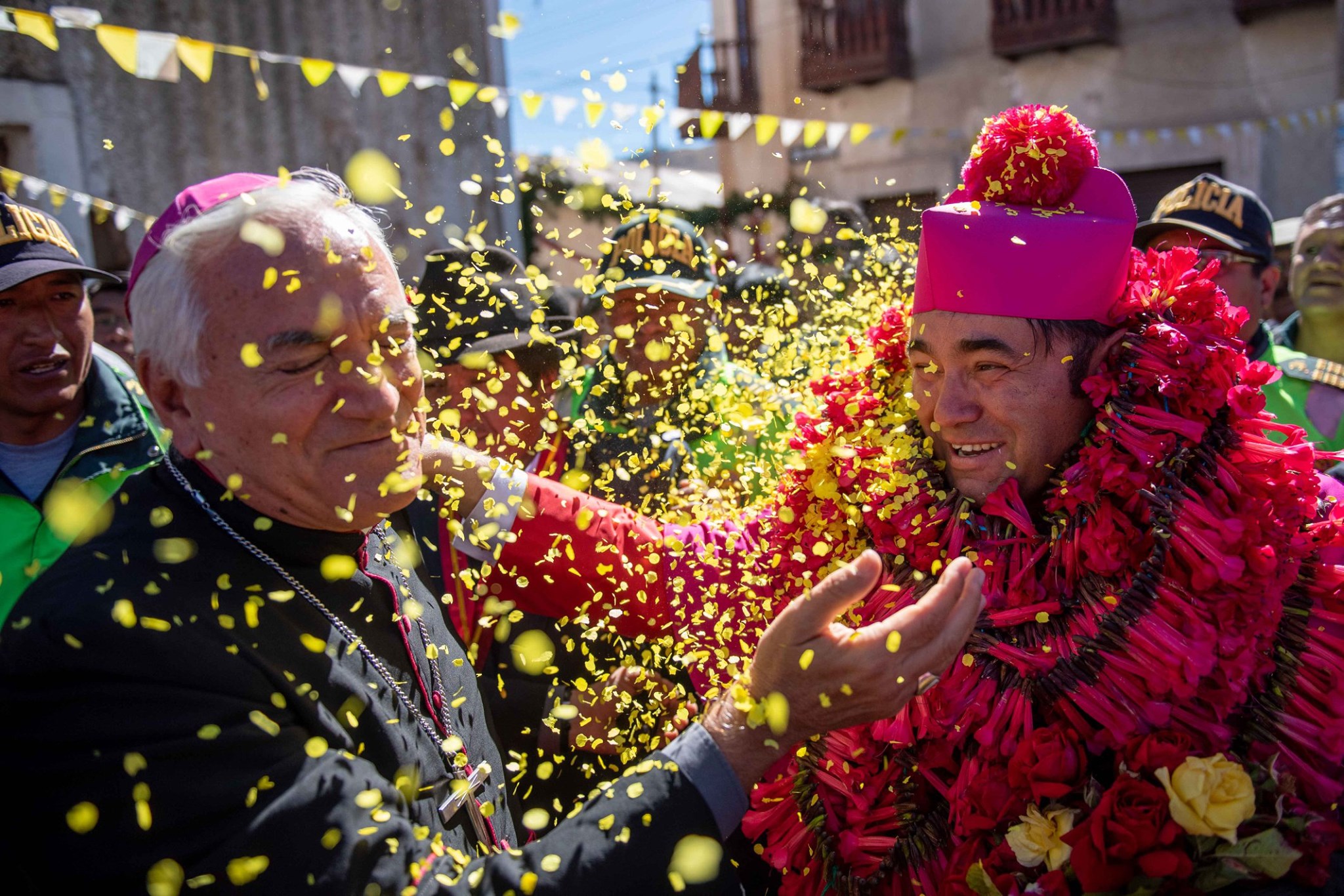
I recently had the privilege of being present at the episcopal consecration of Bishop Giovanni Cefai, MSSP, at the Cathedral of Arequipa, Peru, on June 24, and his installation in (or in old speak, taking possession of) the new prelature of Santiago Apostol in Huancane, high up in the southern Peruvian Andes on June 30.
The annual Oħloq Tbissima marathon to be held later this month in Malta, will promote and support the missionary activities of this MSSP congregation in particular in view of Bishop Giovanni’s consecration.
What struck me in the two main celebrations were the two faces of our Church. The consecration in the Cathedral of Arequipa was immaculate, followed protocol to perfection, and in its own way was a magnificent celebration. The liturgical symbols – the anointing of the head of the new bishop with oil and the laying of the Word of God in silence above the bishop’s head – were all done with attention to detail and perfection. The massive organ and its music filled the space.
Yet, it felt that, for all its grandeur, something was missing. Someone even went as far to say that it felt “plastic” though I don’t subscribe to that view. It is something the Catholic tradition has remained very good at, and in some ways, it is a worthy expression of the mystical and transcendent.
The old church… was alive, and you could feel it. Pride, ownership, gratitude, and above all, hope.
Fast forward to Huancane on June 30, and it could not have been more different. Bishop Giovanni inched his way from the outlying villages with each community showering him with flowers, garlands and food offerings. The plaza of Huancane heaved with dance, bombo drums, zamponias and reed instruments from the Andes’ sierra regions. People wore a riot of coloured costumes.
In the church, the singing was mostly in Aymara, the native language of the area. The offertory included a procession of fruit offerings from the massive terrain of the prelature. It felt local, alive, owned.
Each moment, like when Bishop Giovanni was led to his cathedra (seat), or given the bishop’s crozier as a mark of his leadership of the Catholic community, was met with thunderous applause. The liturgy wasn’t strictly perfect, but it still flowed.
The old church, in dire need of restoration, together with the hundreds left outside watching on a screen, was alive, and you could feel it. Pride, ownership, gratitude, and above all, hope.
Which is our Church? Both. A Church that is cultic, transcendental, is a pointer to the mystery that we all stand in awe of. It points our gazes up. We need that, amid the humdrum of daily life. Yet on its own it runs the risk of becoming aloof, irrelevant and sterile.
On the other hand, a Church that is coming from the people promises much more in the life of faith of common folk. It shows a Church that is with the people, journeying with them, in their language, their signs, and their dreams. This Church too runs the risk of going to the extreme of becoming irreverent, without reference to the deeper calling of each believer. The former is ordered tradition that risks becoming dead; the latter is life that always tends to messiness.
This is the tension bishops and churches straddle. Pope Francis seems to trust more the messiness of discernment… but many still prefer the tried and tested order of doctrine. Our prayers, for Bishop Giovanni and all the leaders of the Church, is that they learn to walk this tension in faith.
The article first appeared in Times of Malta on Sunday, July 7, 2019